As food and café lover, I can’t help but share the "crème de la crème" of hidden gems—places I’ve come to adore. This was my second time in Vietnam, a country I hold close to my heart. I've curated a list of all the spots I've fallen for, the ones I’d return to the moment I touch down.
Here is the second post of the three-part series, focused on my favorite spots in Sa Pa, Cat Ba, and Hội An.
Sa Pa
I don’t have a long list of addresses to share, but if there’s one thing that has stayed with me, it’s the Chestnut Cake (Bánh Hạt Dẻ). These golden treasures are tucked away on almost every street corner in Sa Pa, calling out to you with their warmth.
Imagine a flaky, delicate crust that melts with every bite, revealing a rich, sweet, nutty filling—comforting and indulgent. The kind of taste that lingers, the kind you’ll be thinking about long after you leave. I miss it so much, I’m already dreaming of recreating it in my kitchen.
Honestly, if I had given in fully to my cravings, I would’ve eaten nothing else the entire time I was there. These cakes are a beloved local specialty, cherished by tourists and locals alike. So if you ever find yourself wandering the misty streets of Sa Pa, treat yourself—grab one, maybe two, and savor every bite. They’re a memory you can taste.
Cat Ba Halong bai
If you ever visit Halong Bay, the boat day trip is an experience not to be missed. It’s a perfect blend of adventure and relaxation. The itinerary includes kayaking through stunning caves, passing by a traditional fishing village, and stopping at a secluded lagoon for a swim and exploration—all set against the breathtaking backdrop of the bay.
When lunchtime comes, you’re treated to a grand spread: a table filled with vibrant, colorful dishes that taste just as incredible as they look. Enjoying this meal while taking in the serene views of the bay elevates the experience even more.
I’ve done this tour twice, and both times were unforgettable—I was so moved by the bay’s beauty that I was brought to tears.
You can choose between a one-day trip or longer options of two or three days. Personally, I opted for the one-day tour, which turned out to be the perfect balance of discovery and enjoyment.
Hội An
Hội An is a place where history is both felt and seen. From the fusion of European and Asian architecture to the warm yellow buildings, weathered wooden shutters, and bougainvillea flowers spilling from every corner, the city whispers its story through every street and wall. As dusk settles, a transformation takes place—like something out of Spirited Away. The lanterns glow, bathing the streets in a soft, golden light, while their reflections dance on the calm Thu Bon River. It’s a scene that looks unreal, as if pulled from a dream. It feels as though the city itself is gently awakening, wrapped in an ethereal atmosphere.



Beyond its beauty, it is also a haven for incredible food, like the famous bánh mì. This Vietnamese staple, originally prepared as a meal for colonists, has evolved into a beloved dish that reflects the rich culinary history of the region. The Vietnamese have made it their own, infusing it with local flavors and ingredients that give it a distinct identity.
Bánh mì is an incredibly affordable and versatile option, perfect for any meal or even as a snack. There are two must-visit places if you’re in Hội An.
Firstly, Madam Khanh, the Bánh Mì Queen, with over 30 years of experience, delivers some of the best traditional Vietnamese recipes for this iconic sandwich. The flavors are simply outstanding—rich, authentic, and bursting with incredible taste. You truly can’t go wrong with this legendary spot.
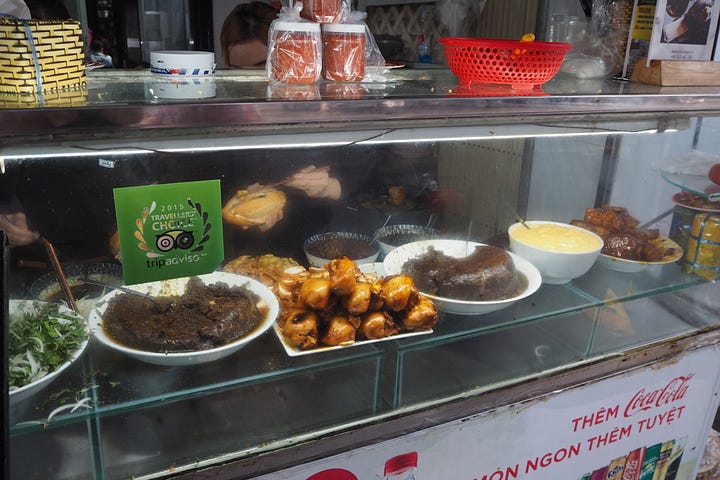

Or, a second excellent choice is Bánh Mì Phượng, widely known and highly regarded as the most famous bánh mì restaurant in the country. Here, you’ll find delicious and diverse bánh mì recipes that cater to a wider range of tastes. It’s definitely worth a visit if you’re looking for variety.


Another specialty of Hội An is Bánh Xèo.
These crispy pancakes are filled with shrimp, pork, bean sprouts, and fresh herbs. You wrap them in lettuce, then in rice paper, and dip them into a flavorful nước mắm pha sauce. The combination of different textures and flavors makes it both captivating and delightful.
It’s an amazing dish that you can find everywhere, from street food stands to restaurants. It’s one of my favorite dishes (along with bánh mì, of course), and even now, back in London, I continue to order it whenever I eat at a Vietnamese restaurant.
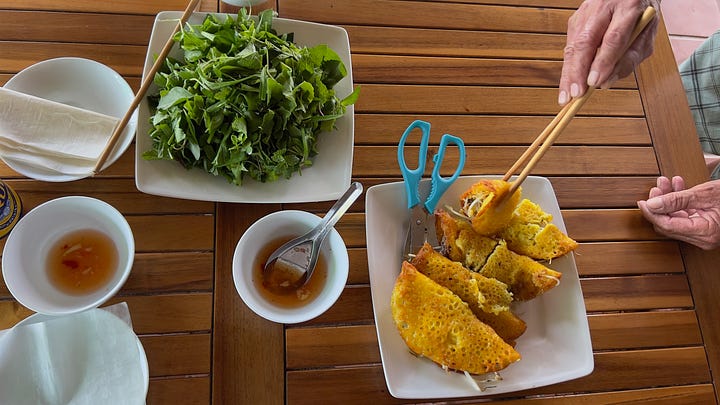

Coconut village
A place that I truly loved—and went to for nearly every dinner—is Phat Loc Eco Cooking and Restaurant, owned by the cutest woman. It’s located a bit further out, around a 10-minute scooter ride from Hội An (our homestay was nearby; I also highly recommend Mercy Homestay) in the serene Coconut Village.
Her cooking is absolutely divine. I had the opportunity to try so many of her dishes, and I can confidently say she knows exactly what she's doing. For those interested, Phat Loc also offers cooking classes—a fantastic way to learn authentic Vietnamese cuisine..
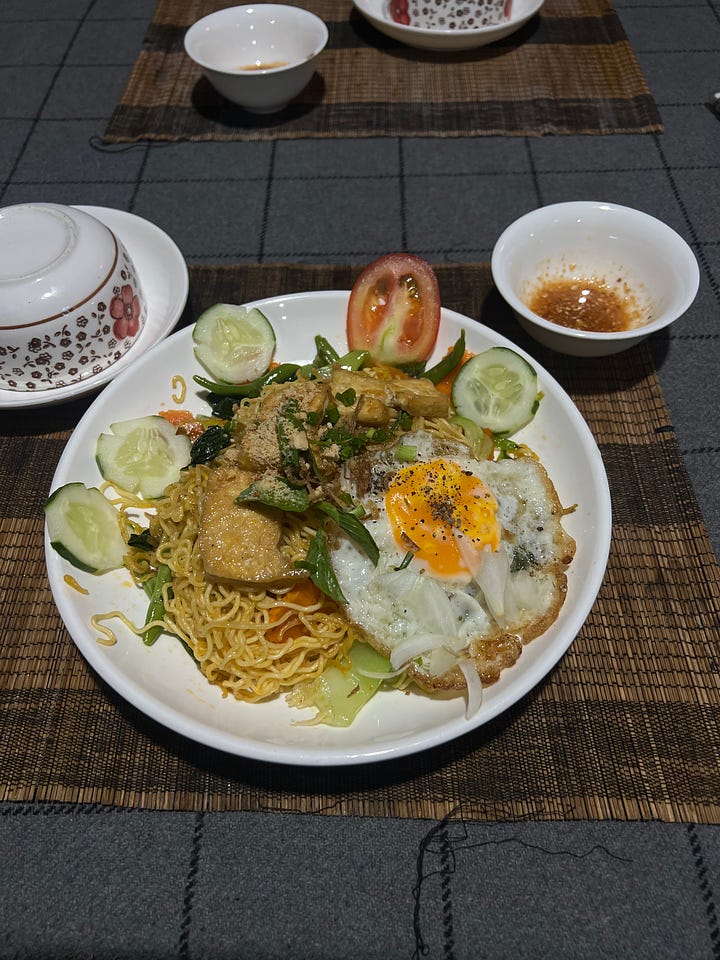



Lost in the Rice Fields
Last but not least, about 5km from Hội An, tucked away amidst the endless rice fields, you’ll discover the most charming café. It feels like stepping into a Miyazaki movie, with scenery that exudes a timeless, peaceful atmosphere. Adding to its charm is the remnant of an old brick furnace sitting atop the rice fields (which you can climb—though, of course, at your own risk). This hidden gem is known as LÒ GẠCH CŨ FARM.
The food and beverages were as succulent as the view. While I can’t recall the exact name of my drink, it was made from their own brown rice (which you can even buy there!).
I also treated myself to their mango sticky rice, and let me tell you—it was breathtaking. The brown rice brought a unique depth to the dessert. The mango was perfectly juicy, and the coconut cream was rich yet balanced, allowing every flavor to shine through without overpowering the dish.

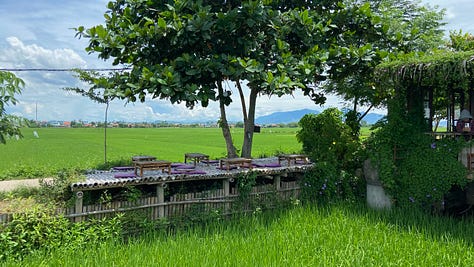



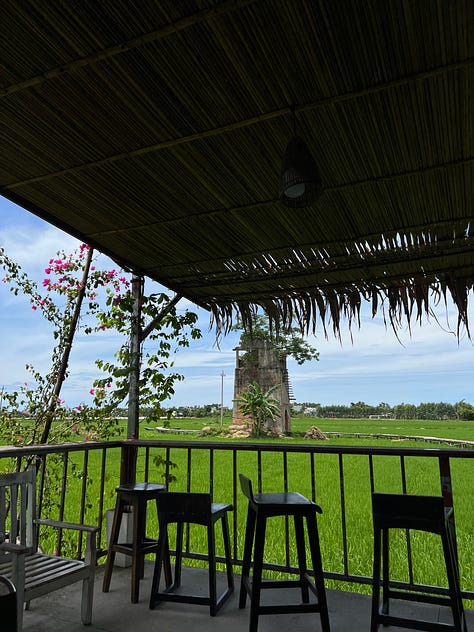

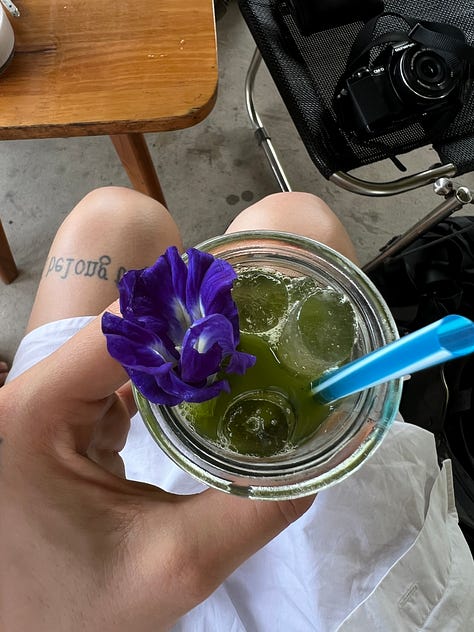

This concludes the Vietnam series. The next post will focus on Bangkok!
I hope you enjoyed it—thank you so much for reading.
xx Kuroe





